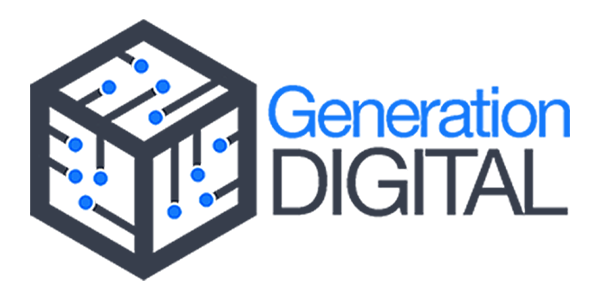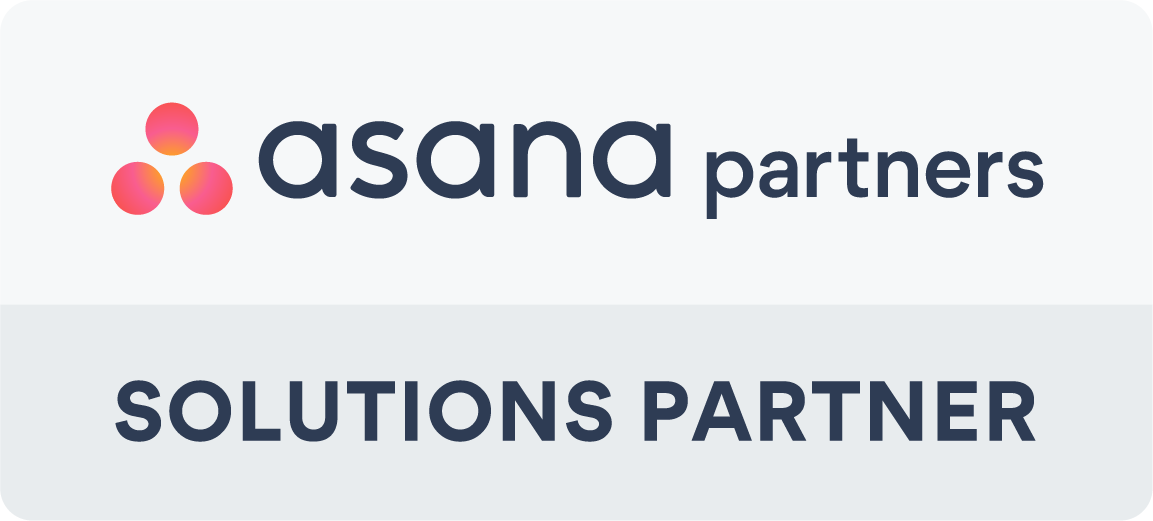In today’s fast-paced business environment, selecting the right productivity software is crucial for maintaining efficiency and staying competitive. Asana and Smartsheet are two popular tools that promise to enhance productivity, streamline project management, and foster collaboration. But which one is right for your business? This article will provide an in-depth comparison of Asana and Smartsheet, guiding you through the key features and benefits of each platform. By the end, you'll have a clear understanding of which tool best suits your enterprise needs.
Introduction
In the ever-evolving landscape of enterprise software, staying ahead requires choosing the right tools. Asana and Smartsheet are both leaders in the productivity software market, but they cater to different needs and preferences. Capturing the attention of decision-makers, it's essential to highlight the distinct features and capabilities that each platform offers.
What Are Asana and Smartsheet?
Asana is a project management tool designed to help teams organise, track, and manage their work. Known for its intuitive interface and robust task management features, Asana is widely used by companies of all sizes to enhance productivity and collaboration.
Smartsheet, on the other hand, is a dynamic work management platform that combines the familiar interface of spreadsheets with advanced project management capabilities. It is particularly favoured by enterprises that require complex project tracking, automation, and integration features.
Deep Dive into Features
Now that we have your attention, let’s dive deeper into what makes Asana and Smartsheet stand out in the crowded field of productivity software. Understanding their unique features and strengths will help you make an informed decision.
Key Features of Asana
-
Task Management: Asana excels in task management with features like task assignments, due dates, subtasks, and task dependencies. Its clean and user-friendly interface makes it easy to create and manage tasks.
-
Project Views: Asana offers multiple project views including lists, boards (similar to Kanban), calendars, and timelines (Gantt charts). This flexibility allows teams to choose the view that best suits their workflow.
-
Collaboration: Asana promotes collaboration with features like comments, file attachments, and real-time notifications. Team members can easily communicate and share updates within tasks and projects.
-
Integrations: Asana integrates with a wide range of third-party apps such as Slack, Google Drive, Microsoft Teams, and more. This connectivity enhances its functionality and allows seamless workflow integration.
-
Automation: Asana’s automation features, including rules and templates, help streamline repetitive tasks and improve efficiency.
-
Reporting and Analytics: Asana provides robust reporting tools to track project progress and team performance. Customisable dashboards and advanced search functions offer insights into project metrics.
Key Features of Smartsheet
-
Spreadsheet Interface: Smartsheet’s familiar spreadsheet-like interface makes it easy for users to adopt and start using the platform. It offers advanced functionalities beyond traditional spreadsheets.
-
Project Management: Smartsheet supports Gantt charts, calendars, card views (Kanban), and grid views, allowing users to visualise and manage projects in various formats.
-
Automation: Smartsheet’s automation capabilities include workflows, reminders, and notifications. Users can create complex automation rules to streamline processes and reduce manual work.
-
Collaboration: Smartsheet facilitates collaboration through shared sheets, comments, attachments, and real-time updates. It also includes proofing tools for reviewing and approving documents.
-
Integrations: Smartsheet integrates with numerous third-party applications such as Microsoft Office 365, Google Workspace, Salesforce, and more. This enables seamless data exchange and workflow integration.
-
Reporting and Dashboards: Smartsheet offers powerful reporting and dashboard features that provide real-time insights into project status, resource allocation, and performance metrics.
Enterprise Use Cases
Understanding the practical applications of Asana and Smartsheet in real-world scenarios can provide further clarity on their suitability for your business. Here are some use cases for each platform, demonstrating their strengths in different enterprise environments.
Use Cases for Asana
-
Marketing Campaign Management: Marketing teams can use Asana to plan, execute, and track campaigns. The platform’s project views and task dependencies help in managing timelines and ensuring that all elements of a campaign are completed on schedule.
-
Product Development: Asana’s task management and collaboration features make it ideal for product development teams. From brainstorming sessions to product launches, teams can track progress, share updates, and collaborate efficiently.
-
IT Project Management: IT teams can leverage Asana’s automation and reporting tools to manage software development projects, track bugs, and ensure timely delivery of updates and features.
-
HR Onboarding: HR departments can streamline the onboarding process for new employees using Asana’s templates and task assignments. This ensures that all necessary steps are completed and new hires have a smooth transition into the company.
Use Cases for Smartsheet
-
Construction Project Management: Smartsheet’s Gantt charts and resource management features are ideal for managing complex construction projects. Teams can track timelines, allocate resources, and monitor project progress in real-time.
-
Sales and CRM: Sales teams can use Smartsheet to manage leads, track sales activities, and forecast revenues. The platform’s integration with CRM systems and real-time dashboards provide valuable insights into sales performance.
-
Event Planning: Event planners can benefit from Smartsheet’s collaboration and automation features to organise events, manage vendors, and ensure that all logistical details are covered.
-
Supply Chain Management: Smartsheet’s advanced reporting and automation capabilities are perfect for managing supply chains. Teams can track inventory levels, manage orders, and ensure that all processes are running smoothly.
Comparison of Enterprise Features: Asana vs Smartsheet
| Feature | Asana Enterprise | Smartsheet Enterprise |
|---|---|---|
| Task Management | Advanced task assignments, due dates, subtasks, dependencies | Spreadsheet-like interface with advanced functionalities |
| Project Views | Lists, boards, calendars, timelines | Gantt charts, calendars, card views, grid views |
| Collaboration | Comments, file attachments, real-time notifications | Shared sheets, comments, attachments, real-time updates |
| Integrations | Slack, Google Drive, Microsoft Teams, more | Microsoft Office 365, Google Workspace, Salesforce, more |
| Automation | Rules, templates | Workflows, reminders, notifications |
| Reporting and Analytics | Customisable dashboards, advanced search | Real-time reporting, customisable dashboards |
| Security | Data encryption, SSO, custom access controls | SOC 2 compliance, user authentication, advanced user permissions |
| Dedicated Support | Priority support | Dedicated account managers |
| Customisation | Custom branding | Advanced workflow automation, customisation options |
| Scalability | Supports large teams and complex projects | Supports large teams and complex projects |
The Need for Enterprise Packages
Both Asana and Smartsheet offer enterprise packages that provide additional features and benefits tailored to the needs of large organisations. These packages often include enhanced security, dedicated support, and advanced customisation options. Here’s a closer look at what each platform offers for enterprise users.
Asana Enterprise
-
Advanced Security: Asana Enterprise offers advanced security features such as data encryption, SSO (Single Sign-On), and customisable access controls to protect sensitive information.
-
Priority Support: Enterprise users receive priority support, ensuring that any issues are resolved quickly by Asana’s dedicated support team.
-
Customisation and Branding: Asana Enterprise allows for greater customisation, including custom branding options to align the platform with your company’s identity.
-
Advanced Reporting: Enhanced reporting features provide deeper insights into project performance and team productivity, enabling data-driven decision-making.
-
Scalability: Asana Enterprise is designed to scale with your business, supporting large teams and complex projects with ease.
Smartsheet Enterprise
-
Enterprise-Grade Security: Smartsheet Enterprise includes robust security features such as SOC 2 compliance, user authentication, and advanced user permissions to safeguard your data.
-
Dedicated Account Management: Enterprise users benefit from dedicated account managers who provide personalised support and guidance.
-
Customisable Workflows: Smartsheet Enterprise offers advanced workflow automation and customisation options to tailor the platform to your specific business processes.
-
Enhanced Reporting and Analytics: Real-time reporting and advanced analytics tools provide comprehensive insights into project performance, helping you make informed decisions.
-
Integration Capabilities: Smartsheet Enterprise supports extensive integrations with other enterprise systems, ensuring seamless data flow and workflow integration.
Making the Decision
Now that you have a comprehensive understanding of Asana and Smartsheet, it’s time to take action. Choosing the right productivity software is a critical decision that can significantly impact your business’s efficiency and success. Here are some steps to help you make the final decision:
Step 1: Identify Your Business Needs
Assess your organisation’s specific needs and challenges. Consider factors such as team size, project complexity, required integrations, and existing workflows. This will help you determine which features are most important for your business.
Step 2: Evaluate the Features
Compare the features of Asana and Smartsheet in the context of your business needs. Create a checklist of must-have features and see which platform aligns best with your requirements.
Step 3: Consider User Experience
Think about the user experience and ease of adoption. A tool that is intuitive and easy to use will likely have higher adoption rates among your team, leading to better productivity.
Step 4: Test the Platforms
Most software providers offer free trials or demos. Take advantage of these to test both Asana and Smartsheet. Involve key stakeholders and gather feedback on their experiences with each platform.
Step 5: Assess the Cost
Evaluate the pricing models of Asana and Smartsheet. Consider not just the subscription costs but also the potential return on investment from improved productivity and efficiency.
Step 6: Make an Informed Decision
Based on your evaluation, make an informed decision on which platform to implement. Ensure that the chosen tool aligns with your long-term business goals and provides the flexibility to grow with your organisation.
Final Thoughts
Both Asana and Smartsheet offer robust productivity solutions with unique strengths. Asana is ideal for teams looking for an intuitive, flexible project management tool that enhances collaboration and accountability. Smartsheet, with its powerful automation and comprehensive project tracking capabilities, is well-suited for enterprises that require advanced project management and reporting features.
Ultimately, the right choice depends on your specific business needs and preferences. By following the steps outlined above and leveraging the strengths of each platform, you can make a well-informed decision that will drive your business forward.
If you need further assistance in deciding or implementing the right tool for your enterprise, Generation Digital can help. As an EMEA onboarding and enterprise consultant, we specialise in the purchase and implementation of Asana. Our team will take the stress out of your software selection process, ensuring a smooth transition and optimal utilisation of your new productivity tool. Contact us today to learn more about how we can support your business.
Digital Transformation Collaboration Digital Workplace Work Management Asana Remote Working Project Management Workflow Marketing Agile Project Management Smartsheet



